SPECULUM
«Speculum» is a cross-disciplinary project aiming to create a space for reflection about intimacy, nakedness, sexuality and gender identity. Since too often the term «body» is contrasted with «mind» and thus used to designate a separate reality from the rest of our «being», this project concerns the (re)discovery of the body as an integral part of self-identification.
Refusing the notions of indecency and shame, we want to promote a climate of curiosity and acceptance around nakedness. What relationship do you have to your own genitalia? How do we feel in our skin in the moment of exposure to someone else’s gaze? Is there a clear-cut line between empowerment and oppression of our bodies?
Bringing together various fields of artistic practice, this exhibition strives to explore the physicality of our bodies without reducing them to flesh, asking what it means to be naked in a hypersexualized world.
T: Katharina Stahlhofen
Performance:
"The only reason for me to get naked is to take a bath or to make love" spielt mit unserer Körperwahrnehmung und berührt dabei Fragen nach Macht, Scham, sexueller Selbstbestimmung und allgegenwärtigem Voyeurismus. Auf der Suche nach neuen Blickwinkeln auf den Körper bewegt sich die Performance zwischen Ritual und Utopie und stellt unsere Sehgewohnheiten auf den Prüfstand.
03.09.–10.10.2020
OPENING:
03.09.2020 6PM
RUNNING:
Saturdays and Sundays from 12–6PM
open by appointment
CLOSING:
10.10.2020 6PM
PERFORMANCE:
Mirjam Radovic
05.09.2020 8PM
︎︎︎ register here
06.09.2020 8PM
︎︎︎ register here
ADRESSE:
101PS
Hartwichstraße 101
50733 Cologne

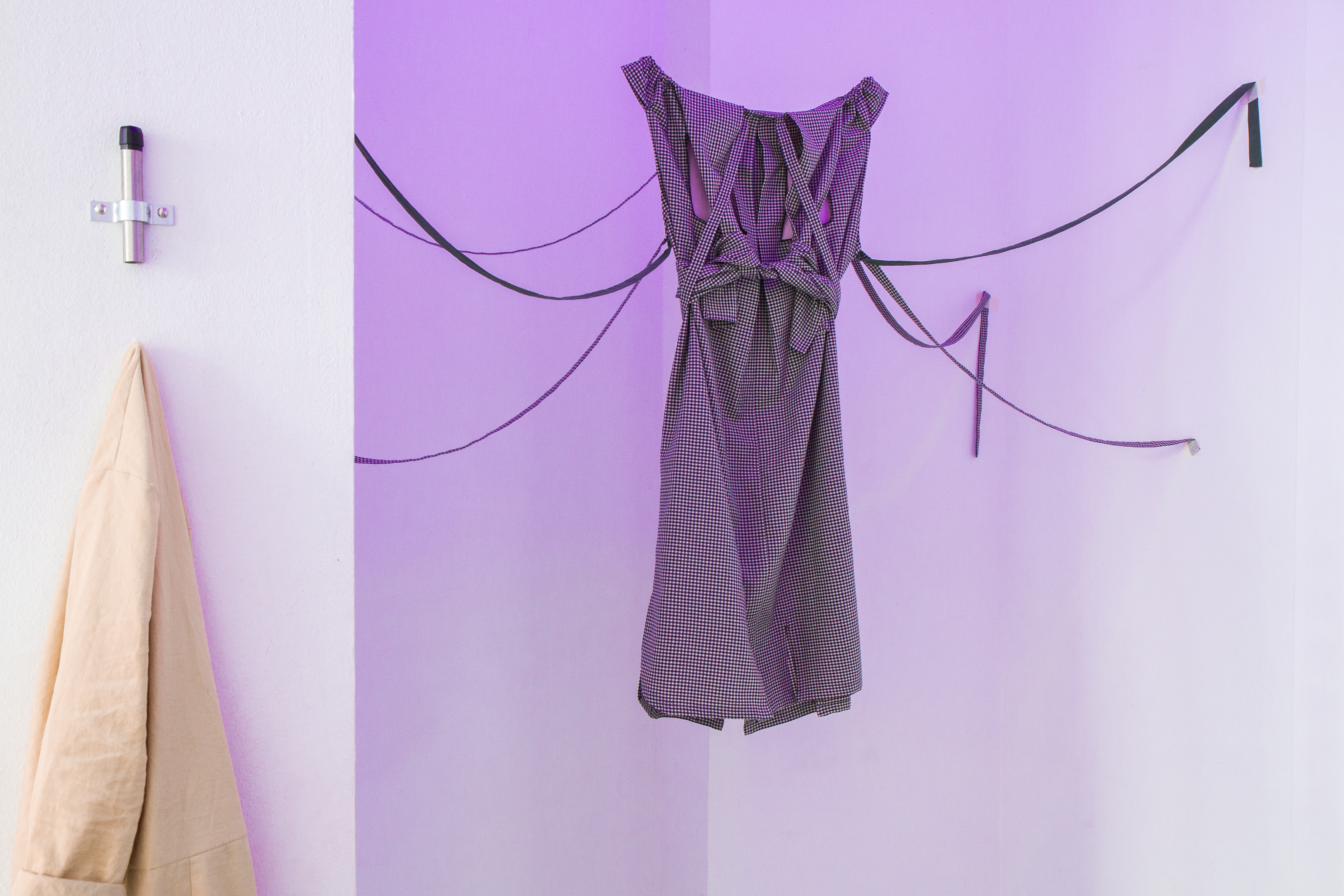

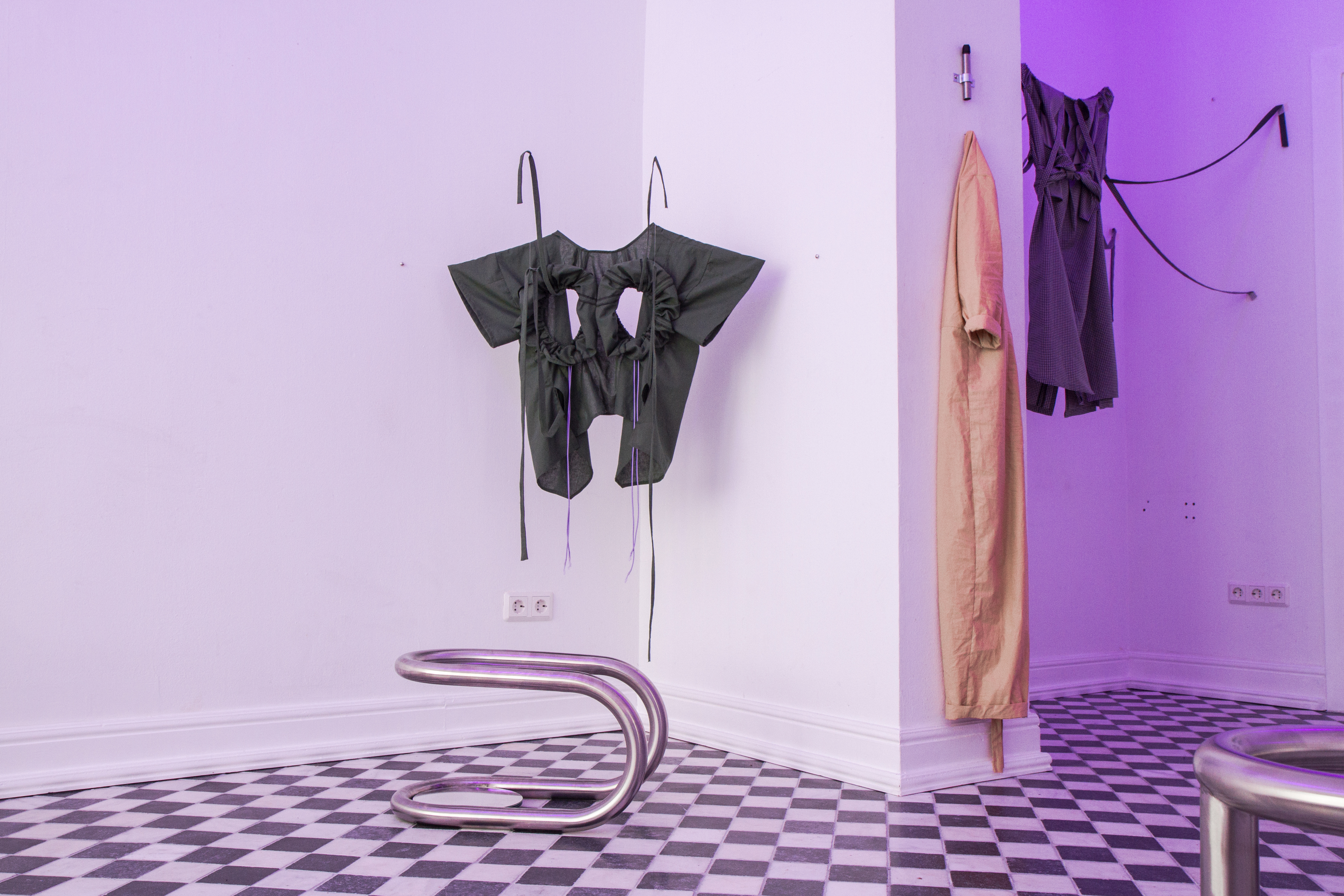


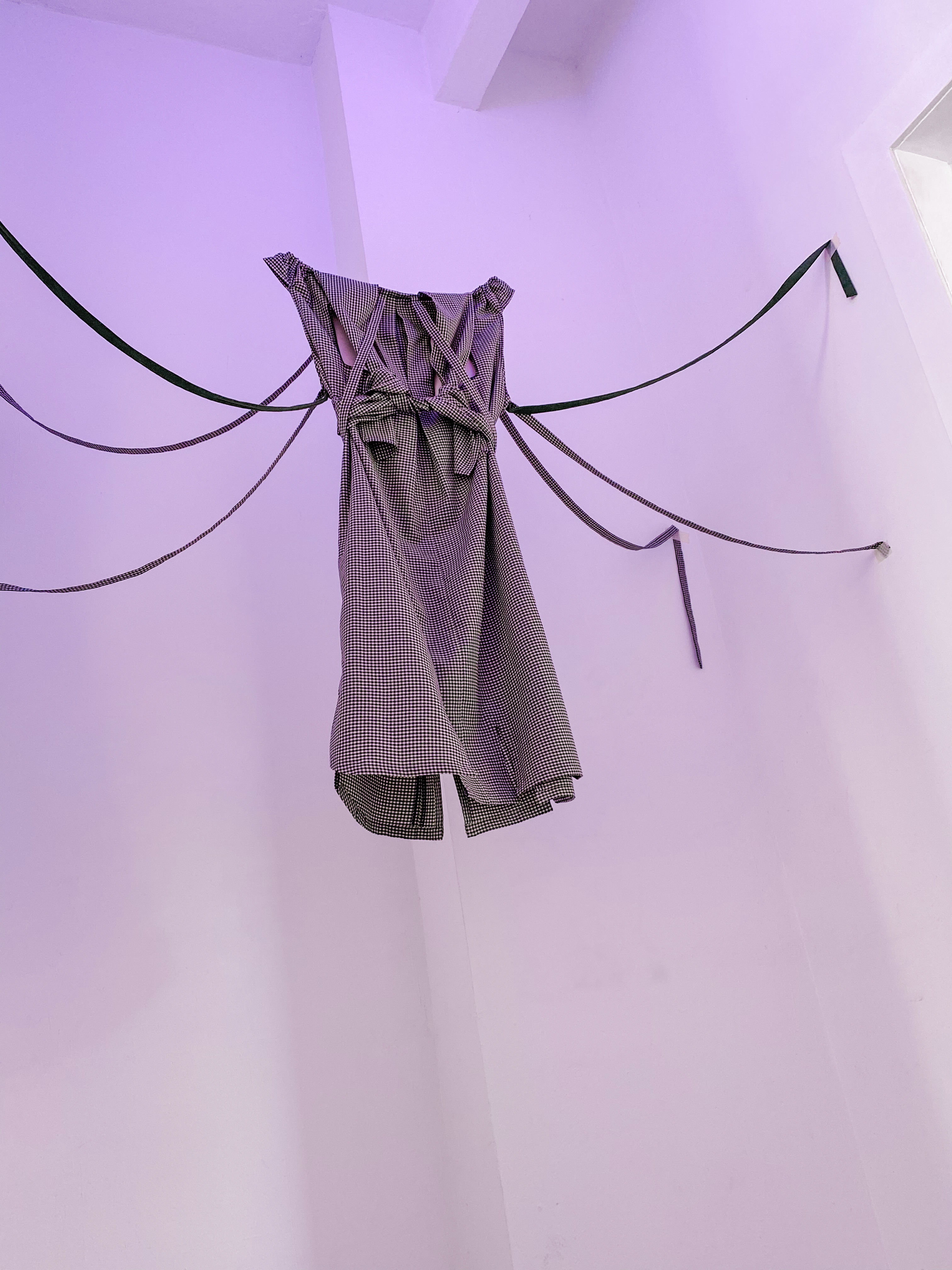

Turnips
Charlotte Werth
Clothing is a continuation of the body, and yet not part of it. With "Turnips", Charlotte Werth reflects on the importance of clothing as an interface between the biological body and its social existence. She questions the clear and yet somewhat arbitrary line we draw between the private and public spheres through the choice of our garments.
Charlotte Werth starts her master degree in ‚Material Futures‘ at Central Saint Martins in London. With her background in integrated designer she specialized in fashion, costume and textile design and works in diverse interdisciplinary projects.
︎︎︎@charlottewerth_

*LBYL
Studio Kuhlmann
With *LBYL, Hannah Kuhlmann stages a ritual that does not yet exist as such: Looking at one's own genitalia in mirrors that are explicitly designed for this purpose. Therefore, they make it possible to encounter one's own nakedness in a climate of acceptance, open-mindedness and thoughtfulness. They enable us to see our body in its entirety, to recognize it as part of our "self" and to develop new self-awareness – which in this sense can literally be understood as being aware of oneself. Thus, they reveal that objects of furniture are more than mere articles of daily use, since they materialize cultural conventions and create social encounters.
*LBYL is inspired by Jacques Lacan's theory of the mirror stage, which describes the developmental phase of the child when we begin to recognize ourselves in the mirror. According to Lacan, we only develop an awareness of our body as a coherent unit through the identification with our own mirror reflection. Since prior to this, we experience ourselves in symbiotic connection with our surroundings, the moment of identification with one's own mirror image marks the beginning of becoming a subject.
︎︎︎www.studiokuhlmann.com


‘The only reason for me to get naked is to take a bath or to make love‘
Mirjam Radovic & Katharina Stahlhofen
The performance 'The only reason for me to get naked is to take a bath or to make love' revolves around the intersection of cultural and somatic body perception, touching upon questions of power relations, shame, sexual self-determination and voyeurism. In search of new perspectives on the human body, the performance strives to challenge our viewing habits while oscillating between ritual and utopia.
Actress: Mirjam Radovic
Concept: Mirjam Radovic, Katharina Stahlhofen
Costume: Charlotte Werth
Speaker: Mirjam Radovic, Keshav Purushotham
︎︎︎www.mirjam-radovic.de
︎︎︎Katharina Stahlhofen, @destaster
︎︎︎@keshavara
︎︎︎@charlottewerth_

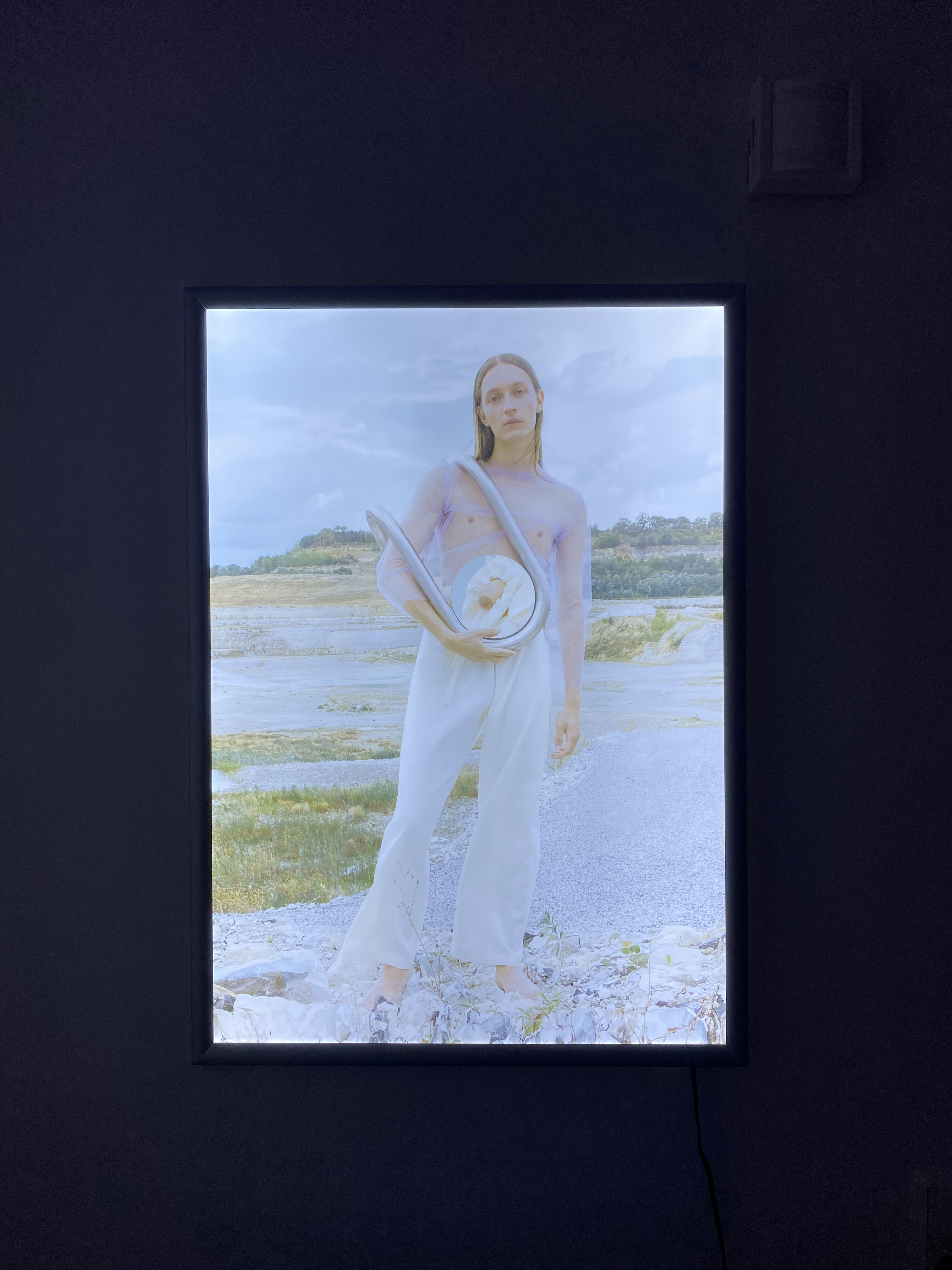
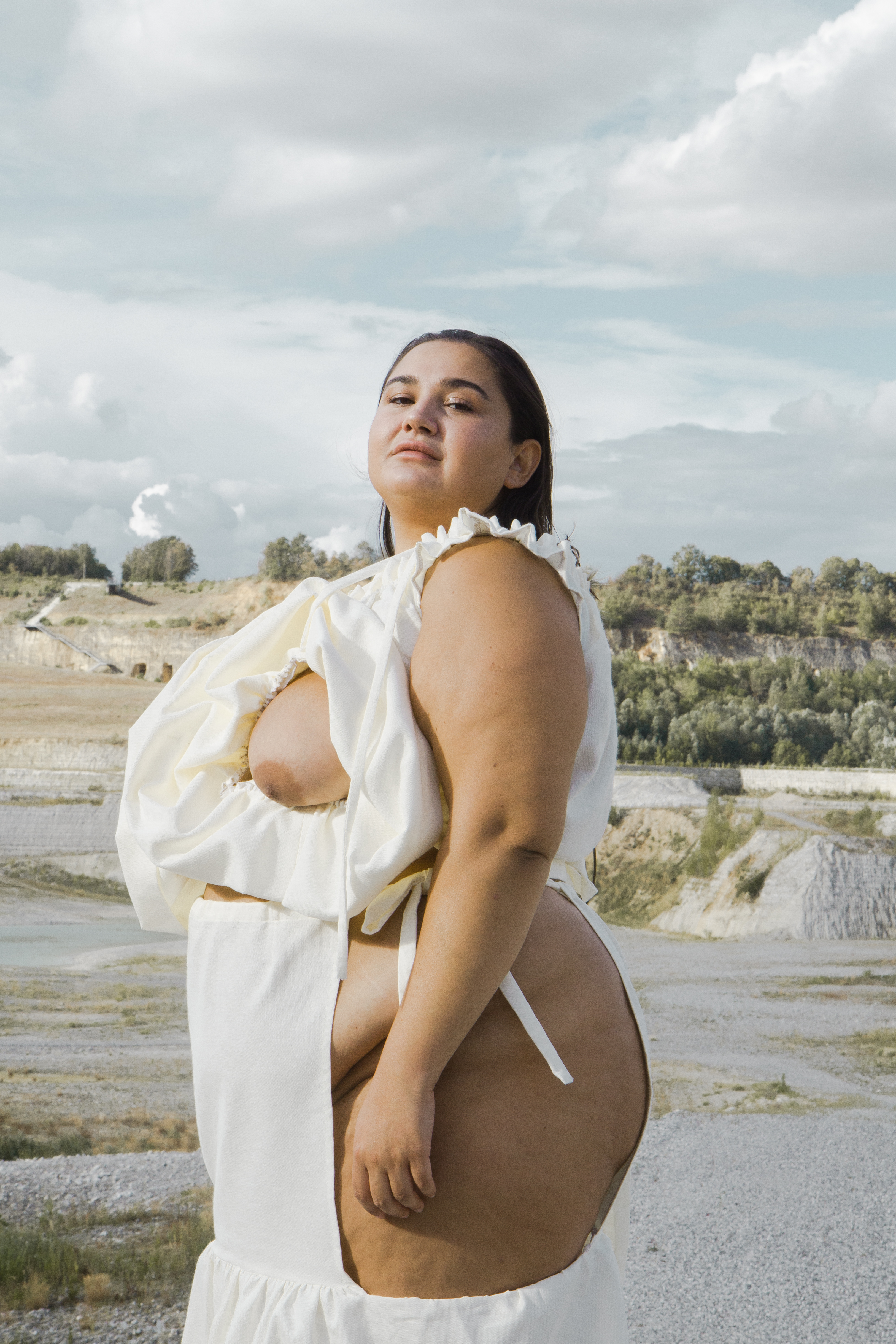




Felt shift
Saskia Kinast
"Felt shift", a term deriving from the 'Focusing' theory, refers to the feeling that flows through the body when mental tension is suddenly released. Saskia Kinast relates that experience to the context of rigid gender binaries and the liberating feeling that comes with the realization of the fluidity of gender identity and sexuality. At the same time, the installation plays with associations of urban advertising aesthetics, ironizing the commodification of the human body through which the body itself turns into an advertising surface.
Saskia Kinast is a photographer and communication designer. She studies sustainable design at the ecosign Academy for Design in Cologne. In spring 2021 she will finish her bachelor's degree, which will be followed by a master's in sustainable design. Nowadays it is more important than ever to make sense of design. Finding solutions to problems, stimulating people's awareness and not designing them just to prettify them. Ecologically, economically, as well as socially. She has already worked with clients such as Greenpeace, Naturstrom and the German Sustainability Award.
Models: Ezgi, Jonas, Noel
︎︎︎ @saskia.kinast
Elisabeth Prehn & Paula Ahn
Genitals often get classified into binary schemes, which are seen as each others counterpart. Due to our dualistic view of biological sex, we believe gender identity must be binary as well. Thus, clearly defined categories like ‚the female‘ and ‚the male’ become the frame to our experience of being human. As biology doesn’t necessarily follow dualistic rules though, our sex organs shouldn’t be exclusively seen through a binary lens either. During the body’s early state of develop- ment, they even share the exact same form, followed by an evolution into a variety of individual shapes. ‘Self-Titled‘ proposes a visual anti- thesis to binaries of sex, identity and the performance of gender.
︎︎︎Paula Ahn, @blyyss
︎︎︎Elisabeth Prehn, @eelis2442
Katharina Stahlhofen & Saskia Kinast
There is something strange about posing for a photograph: you freeze, as if you were already anticipating the image you are about to become, as if you were imitating the immobility and finality of a photograph, drawing its motionlessness on the surface of your body.[1] Thus, 'posing' for a photograph already anticipates a transformation of the living body into a lifeless image. Moreover, photography has enabled us to develop an entirely new perspective on the human body: by losing the spatial, dynamic, and sensual qualities of a real situation, the picture constitutes a predominantly visual perception of human bodies. Meanwhile, the reality of a constantly changing and moving body stands opposed to an ideal that depicts the body in a 'fixed' state. 'Tableau vivant', a collaboration of Katharina Stahlhofen and Saskia Kinast, serves as an extension to 'Felt shift' and offers an alternative perception of the same place and event.
1 Cf. Kaja Silverman (1997)
︎︎︎Katharina Stahlhofen, @destaster
︎︎︎ @saskia.kinast
︎ Prev Next ︎
101PS
info@101ps.space
+49 174 694 343 1
Hartwichstraße 101
50733 Cologne
Germany
info@101ps.space
+49 174 694 343 1
Hartwichstraße 101
50733 Cologne
Germany
© 2020 101PS
